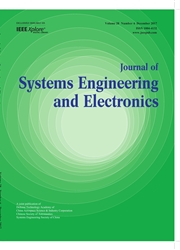

 中文摘要:
中文摘要:
This paper presents a method of computing a 2.1D sketch (i.e., layered image representation) from a single image with mixed Markov random field (MRF) under the Bayesian framework.Our model consists of three layers: the input image layer, the graphical representation layer of the computed 2D atomic regions and 3-degree junctions (such as T or arrow junctions), and the 2.1D sketch layer. There are two types of vertices in the graphical representation of the 2D entities: (i) regions, which act as the vertices found in traditional MRF, and (ii) address variables assigned to the terminators decomposed from the 3-degree junctions, which are a new type of vertices for the mixed MRF. We formulate the inference problem as computing the 2.1D sketch from the 2D graphical representation under the Bayesian framework, which consists of two components: (i) region layering/coloring based on the Swendsen-Wang cuts algorithm, which infers partial occluding order of regions, and (ii) address variable assignments based on Gibbs sampling, which completes the open bonds of the terminators of the 3-degree junctions. The proposed method is tested on the D-Order dataset, the Berkeley segmentation dataset and the Stanford 3D dataset. The experimental results show the efficiency and robustness of our approach.
 英文摘要:
英文摘要:
This paper presents a method of computing a 2.1D sketch (i.e., layered image representation) from a single image with mixed Markov random field (MRF) under the Bayesian framework. Our model consists of three layers: the input image layer, the graphical representation layer of the computed 2D atomic regions and 3-degree junctions (such as T or arrow junctions), and the 2.1D sketch layer. There are two types of vertices in the graphical representation of the 2D entities: (i) regions, which act as the vertices found in traditional MRF, and (ii) address variables assigned to the terminators decomposed from the 3-degree junctions, which are a new type of vertices for the mixed MRF. We formulate the inference problem as computing the 2.1D sketch from the 2D graphical representation under the Bayesian framework, which consists of two components: (i) region layering/coloring based on the Swendsen-Wang cuts algorithm, which infers partial occluding order of regions, and (ii) address variable assignments based on Gibbs sampling, which completes the open bonds of the terminators of the 3-degree junctions. The proposed method is tested on the D-Order dataset, the Berkeley segmentation dataset and the Stanford 3D dataset. The experimental results show the efficiency and robustness of our approach. ? 2017 Beijing Institute of Aerospace Information.
 同期刊论文项目
同期刊论文项目
 同项目期刊论文
同项目期刊论文
 期刊信息
期刊信息
